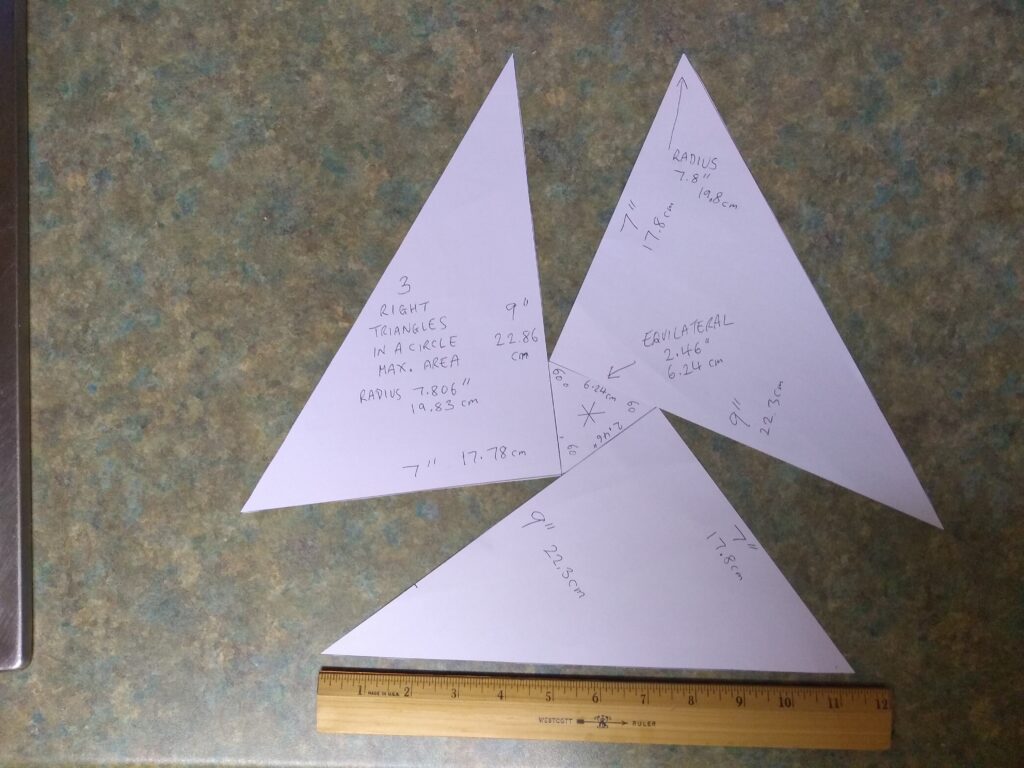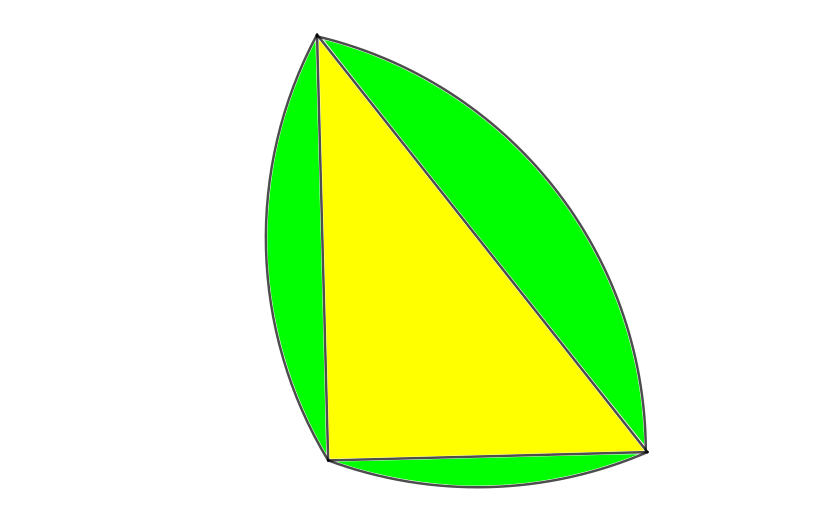Three equal right-angled triangles are inscribed in a circle. They are positioned around an equilateral triangle which stabilises the construction. The triangles are cut from paper, with dimensions noted. The right-angled triangles are 7″ x 9” = 17.8 cm x 22.3 cm, and the equilateral triangle has side length 2.46″ = 6.24 cm. The six outermost points are equidistant from the centre of the equilateral triangle, thus lying on a circle, which is not shown. Iterative modelling with Geogebra found that this construction maximises the area of the circle covered by the three right-angled triangles. The ratio 7:9 of side lengths is a rational approximation to a numerical value found experimentally.



